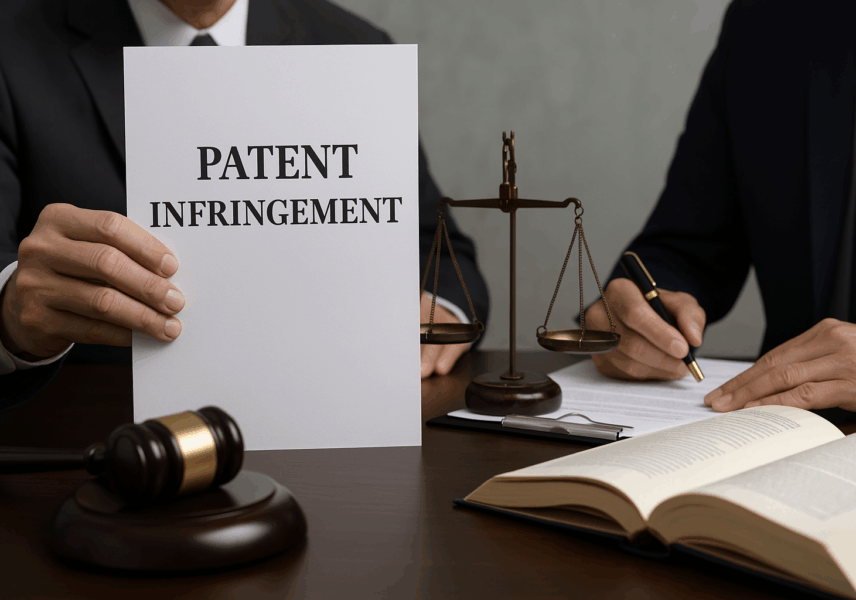
Tactics for Using the Doctrine of Equivalents in Patent Infringement Lawsuits ⚖️📑
Patent law is one of the strongest tools for protecting innovation 🚀. But in a fast-paced technological world, it is rare to see an invention copied exactly. More often, competitors make minor tweaks to avoid direct infringement while still achieving the same function. This is where the Doctrine of Equivalents comes into play.
In this article, we’ll explore how the doctrine is applied in patent infringement cases, the tactics to leverage it effectively, the key criteria courts look at, and the counter-strategies defendants might use.
What Is the Doctrine of Equivalents? 🔍
The doctrine of equivalents states that if a product or process does not literally infringe a patent but performs substantially the same function in substantially the same way to achieve the same result, it may still constitute infringement.
This doctrine was developed to prevent competitors from evading patents through trivial wordplay or superficial technical changes.
Tests Applied by Courts ⚖️
1. Function-Way-Result Test
- Does it perform the same function?
- Does it operate in the same way?
- Does it achieve the same result?
If all three are “yes,” it is often considered equivalent.
2. Insubstantial Differences Test
If the differences between the patented invention and the accused product are “insubstantial,” courts may find infringement.
Tactics for Plaintiffs 🎯
1. Strengthen with Expert Opinions
Technical experts’ reports stating that the differences are insubstantial carry great weight in court.
2. Focus on Functionality
Emphasize how the accused product works rather than how it looks. Functionality often reveals equivalence.
3. Use Prosecution History
Statements and amendments made during the patent application process can support equivalence claims.
4. Show Market Impact
Demonstrate that the competitor’s product is capturing economic advantage by copying the essence of your patented invention.
5. Use Diagrams and Comparison Tables
Simplify complex technical details for judges and juries with visuals.
Example Comparison Table 📊
| Criterion | Patented Invention | Accused Product | Similarity |
|---|---|---|---|
| Function | Filters liquid | Filters liquid | ✅ |
| Way | Pressure filtration | Pressure filtration | ✅ |
| Result | Clean liquid | Clean liquid | ✅ |
Such a table visually strengthens the equivalence argument.
Defense Strategies for Defendants 🛡️
1. Highlight Substantial Differences
Show that the method used is genuinely different and offers significant technical advantages.
2. Prosecution History Estoppel
If the patent owner previously narrowed claims during prosecution, equivalence arguments may be barred.
3. Public Policy Argument
Argue that overly broad use of equivalence would hinder innovation.
4. Show Industry Standards
Demonstrate that the accused method is an independent, widely used industry standard not tied to the patent.
Diagram: Decision Process for Doctrine of Equivalents 🔄
[Patented Invention] → [Accused Product Analysis]
↓
(Function, Way, Result same?) → Yes ✅ → Infringement
→ No ❌ → No Infringement
Personal Anecdote 🎭
In one case I worked on, the competitor’s product had only a different screw shape. At first glance, it looked different, but the function, way, and result were identical. Using expert reports and comparison tables, we demonstrated equivalence, and the court ruled in our favor. This taught me: form can be deceiving, but function reveals the truth.
Frequently Asked Questions (FAQ) ❓
1. Is the doctrine of equivalents valid worldwide?
👉 No. It is firmly applied in the U.S., while in Europe it is used more narrowly under “insubstantial differences.”
2. When can a patent owner raise equivalence?
👉 Typically when literal infringement cannot be proven.
3. Does it expand written patent claims?
👉 Yes, but only reasonably and at the court’s discretion.
4. How can defendants defend against it?
👉 By proving substantial technical differences or relying on prosecution history estoppel.
5. Can the doctrine be interpreted too broadly?
👉 Theoretically yes, but courts often limit it for public policy reasons.
6. Is the function-way-result test always applied?
👉 Common in the U.S., but some jurisdictions prefer only the “insubstantial differences” standard.
7. How does it work for software patents?
👉 If algorithms differ but achieve the same function in the same way, equivalence may apply.
8. Is equivalence always successful for plaintiffs?
👉 No. Courts reject it when the differences are significant.
9. Does it help small businesses?
👉 Yes, as it prevents competitors from bypassing protection with trivial modifications.
10. What’s the most effective tactic?
👉 Expert testimony combined with clear functional comparison visuals.
Conclusion 🎯
In patent infringement lawsuits, the doctrine of equivalents is a powerful tool to protect inventors’ rights. To use it effectively, plaintiffs must highlight functional similarities, technical context, and market impact, while defendants must stress meaningful differences and prior claim limitations.
At the end of the day, winning a patent dispute is not just about the words in a claim, but about capturing the essence of innovation 🔒✨.
